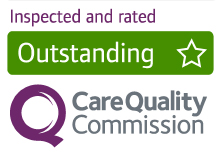Downloaded from www.mymenopausecentre.com
Direct URL: https://www.mymenopausecentre.com/blog/a-menopause-specialists-guide-what-you-need-to-know-about-the-gut-microbiome/
A menopause specialist’s guide to what you need to know about the gut microbiome
The gut microbiome is something no one had heard of until a few years ago and now seems to be something everyone is talking about. So what is it and why is it relevant? In this comprehensive article, My Menopause Centre's Dr Anna Greaves helps us to understand what our gut microbiome does, what we can do to help it, the things that can damage it, how it can be impacted by the menopause and whether HRT can help.
Explore
What is the gut microbiome and why is it relevant?
The gut microbiota is all the microbes that live in your gut. And there are trillions. Microbes include bacteria, viruses, fungi and protozoa, but bacteria make up the greatest proportion. There is roughly a 1:1 ratio of microbial to human cells within our bodies. Strictly speaking, the microbiome is all the genetic material from these microbes; it contains around 3 million genes! To put this into perspective the human genome contains around 20,000 genes. Generally though, we use the terms microbiome and microbiota interchangeably.
Your microbiome is unique to you. Think of it like your garden; something that is ever-changing, growing and diversifying… as long as you look after it, weed it and nurture it!
You inherit your first microbes as an infant from a vaginal delivery or breastfeeding. There is a huge change when an infant is weaned to solid food and then over the years, the microbiome changes due to your diet and other environmental influences. As you can imagine, just like watering and weeding your garden, these changes can be beneficial. However, if you let the weeds take over or do not feed your plants, the changes can also be detrimental to the health of this community within your gut. The diversity of the biome tends to increase up to the age of 40 and then plateaus. The individuality of the biome continues to increase with age, and people living into their 90s will have a carefully cultivated and entirely unique population of microbes, telling part of the story of their lives.
What does the microbiome do?
A well-tended garden provides us not only with a beautiful space to enjoy the outdoors, but also fruit, vegetables, herbs and flowers to eat, and a place to socialise with our loved ones. In the same way, we have a synergistic relationship with our microbes meaning that we both benefit. We provide food and shelter for them, and they provide us with a vast array of metabolic functions which are essential for our health. One key function is digesting fibre, as this is something we cannot do ourselves. In the break down they create short-chain fatty acids which are crucial for gut health, blood sugar and blood fat control, appetite control, and the immune system. The microbes also help digest protein and make various vitamins. We have studies linking the microbiome with not just gut health but healthy immune function, cardiovascular disease, obesity, diabetes and even mental health such as depression.
Diversity is good. As with most things in life, variety is important and healthy. All the different microbes have different roles, help us in different ways and have individual benefits they bring. And, like children (or mine at least!) they all like to eat different things. We best nurture a diverse gut microbiome by eating a wide variety of plants, and I don’t just mean fruit and vegetables. Plants include fruit, vegetables, grains, spices, herbs, nuts and seeds. The ideal number is to eat THIRTY DIFFERENT plants per week, and to try and make this vary week on week too. This may seem intimidating but even a small pinch of a herb or spice counts. And don’t forget that different colours mean different beautiful polyphenols for your microbes; so, a yellow, red and green pepper count as 3 different plants.
What can I do to help my microbiome?
Just as we need to give plants food, water in the summer and tend to those pesky weed, so we need to nurture and feed our microbes and encourage the healthy strains to flourish.
And a key word here is FIBRE. Fibre is the indigestible parts of foods based on plants that are not absorbed into the body but pass through instead. However, along with helping gut motility and keeping us regular, they also feed the microbes in our gut. The part of the fibre which feeds the microbes is called a prebiotic, and these come from plant foods. There are some plants which contain particularly high levels of prebiotics such as artichokes, asparagus, chicory, bananas, berries, tomatoes, garlic, onions, legumes, green vegetables and wholegrain cereals. The importance of fibre is illustrated by a study that found that mice who received a diet low in fibre for four weeks saw a reduction in the levels of the microbial species by 60%.
Adults should eat roughly 30 grams of fibre per day. An apple (with skin on) contains 4 grams, a raw carrot contains 1.5 grams, a serving of wholewheat pasta contains 6 grams, and a serving of lentils or black beans contains 15 grams. When it comes to getting fibre into your diet, legumes are your friends. Plenty of fibre reduces constipation and the risk of bowel cancer. In fact, adding just 7 grams a day of fibre to your diet reduces your risk of common chronic disease. For example, these 7 grams which you could achieve through 125 grams of raspberries, leads to a 9% reduction in cardiovascular disease and heart attacks.
And don’t feel overwhelmed or down-hearted if you read this and feel like you may not be getting enough fibre, or that you eat a lot of processed foods and worry that your gut community may not be very happy. There are easy and simple things you can do to start making a difference and the amazing news is that the changes within the microbiome occur within a few days!
What might I be doing to damage my microbiome?
A little like using a pesticide, there are substances we can expose our microbes to which kills certain strains, allows unhealthier microbes to take over and dominate, and overall affects the balance of the system in a negative way.
These substances include high-intensity sweeteners, such as sucralose or aspartame. These sweeteners are commonly in drinks and puddings, especially in ones labelled as “diet” and “low sugar”, and therefore can be foods people perceive to be healthier choices.
Another category is food additives such as emulsifiers. Emulsifiers are added to processed foods to stop the fat and water components separating, giving a smoother texture and meaning they can sit there much longer on the shelf. They are almost ubiquitous in ultra-processed foods…and just as a reminder, a food is ultra-processed if it contains ingredients that are not in your own kitchen. Basically, it is ultra-processed if you could not make it at home if you were given the recipe. And sadly, this is roughly 60% of all foods in the supermarket.
Medication can also impact on our microbiome. Antibiotics can change the balance, though don’t worry too much about short-term, infrequent courses. And proton pump inhibitors such as omeprazole, lansoprazole, and pantoprazole, which act to inhibit acid secretion to help treat acid reflux symptoms. These are now the second most commonly prescribed drug class in many parts of the UK, with estimates suggesting around 15% of adults are prescribed one within any given year.
And, as you may expect, any toxins will also damage your microbes. These include alcohol, cigarette smoke and environmental pollutants such as air pollution and heavy metals.
What is the relevance to me in the menopause?
The microbiomes of identical boy/girl twins are very similar until puberty but then become distinctly different. This suggests that sex hormones shape the gut microbiome, and we have good evidence to back this up. It would then make sense, and research supports this (though more is needed for full clarification), that things might change at the time of the menopause. As levels of sex hormones decrease there is a reduction in gut microbiome diversity and a shift toward greater similarity to the male gut microbiome.
So, it seems that hormones affect the diversity of our microbiomes, but do our microbes play any role in affecting our hormone levels? Well, the short answer is yes.
The microbiome metabolises oestrogen and other sex hormones, and through a process called deconjugation can affect hormone levels. Hormones that are broken down and would otherwise be excreted from the body can be rescued and recycled meaning that we can retain higher levels of hormones. This process is promoted by higher gut microbiome diversity. Post-menopausal women no longer produce sex hormones in their ovaries and have very low levels of oestrogen and progesterone. Therefore, this hormone rescue and recycling by our helpful gut microbes may be a very important source of sex hormones in our blood. And the hope is that this increased level of sex hormones improves our menopausal symptoms and makes our menopausal transition a healthier and happier time.
Will HRT help?
It makes good sense that replacing our natural hormones, oestrogen and progesterone, at the time when our natural levels drop via HRT would help restore the diversity of the gut microbiome. Animal studies so far back this up, suggesting it does help but the research has not yet been replicated in naturally menopausal women and this is needed before we can draw any firm conclusions.
There is still much to learn about our gut microbiome, but we do have enough information to know that it is integral to our health. It is clear that nurturing the microbiome, creating a diverse and healthy range of microbes, is a sure-fire way to reduce inflammation, boost immunity, and help safeguard a healthier future for yourself. It is never too late to make changes, and these make a difference in less than a week!
Meet Dr Anna
Learn about bowel symptoms in menopause
Authored by:
Dr Anna Greaves
Registered Menopause Specialist and GP
Join the pause. community
We’ve created pause. as a space for women to come together and share stories about their menopause experience, ask questions, and to find support and inspiration. We'll also share the latest news and updates on the menopause from our experts.
Want to be the first to hear our latest news? Join our pause. community today.
Share your email to receive the latest news, updates and information on new products and treatments from My Menopause Centre and our pause. community. You can unsubscribe at any time.
We're committed to protecting and respecting your privacy - see our Privacy Policy and Terms and Conditions

Book a consultation
Whether you want to discuss your symptoms, create a treatment plan that's right for you, understand some test results or have a check-up, the highly experienced doctors and nurses in our menopause clinic are here to help you.
Book nowContact My Menopause Centre
- General enquiries: hello@mymenopausecentre.com
- Book appointments online: Log into your account and go to 'My appointments'
- Book appointments by phone: 0333 444 1067
- Website: https://www.mymenopausecentre.com



















We’d love to hear from you
Please ensure you’re logged in to leave a comment. Not got an account – registration is quick and easy! All comments are moderated prior to being posted on the website and are subject to our Acceptable Use Policy.
Comments